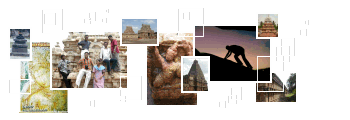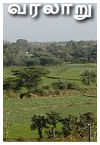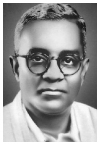 |
 |
 |
http://www.varalaaru.com A Monthly Web Magazine for South Asian History [187 Issues] [1839 Articles] |
 |
 |
 |
http://www.varalaaru.com A Monthly Web Magazine for South Asian History [187 Issues] [1839 Articles] |
|
Issue No. 26

இதழ் 26 [ ஆகஸ்ட் 16 - செப்டம்பர் 15, 2006 ] 2ம் ஆண்டு நிறைவு - மகேந்திரர் சிறப்பிதழ் 
இந்த இதழில்.. In this Issue.. 
|
Vicitracittah
 is one of the more important titles of the Pallava King. is one of the more important titles of the Pallava King.Mahendravikramavarman, found among the list of his birudas inscribed in his cave-temples at Tiruchi and Pallavaram, and in one of his earliest - at Mandagappattu. This tile, Vicitracittah, indicates that he had a highly curious, inventive, and multi-faceted mind. If he was not the first to introduce rock-cut cave-temples into the Tamil country, he was, nevertheless, the first to launch the movement, there, in a big way. From his major works in the stone medium can be traced historically the continued development of stone temples by the Pallava kings and others who followed them. Inscriptions on these stone monuments and on the monuments of other South Indian dynasties form an important source of historical information. However, some modern historians have criticized the practice of south Indian kings inscribing long lists of their royal titles on their stone monuments - a practice initiated by King Mahendra in the seventh century, and taken to unsurpassed heights by the Pallava king, Rajasimha, in the eight century, A.D. What should save King Mahendra from being accused of megalomania, in having long lists of his titles displayed on the walls and pillars of his temples, is his sense of humor. Sober historians have missed the humor. For instance, some have continued the possibility of Mahendra's title 'Samkirnajatih'  , implying 'mixed birth' - though the inscriptions of the Pallavas, themselves, declare that they were of Brahma-Kshatriya origin! (Of course, the above title may also be referring to the king's invention of mixed types of musical scales. There are surely multiple levels of implied meaning in many of his titles.) Another favorite title of his is 'Mattavilasah' , implying 'mixed birth' - though the inscriptions of the Pallavas, themselves, declare that they were of Brahma-Kshatriya origin! (Of course, the above title may also be referring to the king's invention of mixed types of musical scales. There are surely multiple levels of implied meaning in many of his titles.) Another favorite title of his is 'Mattavilasah'  'Drunken Sport'! 'Drunken Sport'!The full power of King Mahendra's 'vicitra'-mind has not been, and probably never will be, fully appreciated by us, because the historical records of that period, a thousand three hundred years ago, have largely disappeared. And some of his important extant records (his Mamandur inscription, for instance) have been defaced by erosion over time. However, let me suggest one other area where this Vicitracittah has made an important contribution to the Tamil country. For some years, now, the evidence from epigraphs seems to be pointing to the Pallavas as the developers of a new form of the Tamil script, which was then to be adopted by the next dynasty to rule, the Cholas, and which was thus to become the direct basis of the modern Tamil script. This is no new claim. The editor of the Archeological Survey of India's Annual Report on Epigraphy, 1903-1904, observed, way back then, that, in King Mahendra's Tiruchi cave-temple, there are two (fully preserved) titles of the king inscribed in what he correctly called the "Pallava-Tamil" script, and which he accurately transliterated as: Pinapinakku  for பிணபிணக்கு and Kusangaana for பிணபிணக்கு and Kusangaana  for குசஞாண. for குசஞாண.I would like to narrow the focus and put forward the suggestion that the chief architect of this 'Pallava Grantha' Tamil script was king Vicitracittah, himself. The two titles mentioned in the previous paragraph, plus two others (one partially obliterated and the other almost totally so), are among the very earliest examples of Pallava Grantha Tamil! The second title, Kusangnaana, conveys the meaning of 'an intellect as sharp as the tip of a blade of kusa grass'. Please note that the editor of the Report used the roman letter s with its diacritical mark for the Tamil letter ச. T.V. Mahalingam, editor of Inscriptions of the Pallavas, follows a different reading of the second title: Kucagraana. If this biruda were to actually have the 'gr' conjunct - which it does not!-one would be would be compelled to treat this title as being written in the Pallava Grantha Sanskrit script (not in the "Pallava Grantha" Tamil script, since any Tamil script would not have such a conjunct), and one would end up having to read it as 'Kucha-graana' (in a more commonly understood transliteration). This reading would result in a much more embarrassing title than the 'Mixed-case' of 'Sankirnajatih'! One more appearance of Mahendra's title, 'Kucanaana' - in the Pallava Grantha Tamil script, again, and to be pronounced Kusangaana!-is found on one of four pillars from Kanchipuram which are now standing in front of the stone-sculpture gallery of the Madras (Chennai) Museum. Was King Mahendra purposely playing a visual and verbal trick on literate spectators, ancient and modern, with this title, 'Kucangaana'? Thirteen of the fourteen titles inscribed on that Kanchi pillar are clearly in Grantha Sanskrit characters. The only one which is scriptally ambiguous is 'Kucangaana', which, if one takes it to be written in Grantha Sanskrit characters is: 'Kuchangaana' - but which, if one takes it to be written in Grantha Tamil characters, is to be pronounced: 'Kusangaana', with a meaning very different. If, as I claim, King Mahendra and/or his royal scribes were the original devisers of the Grantha Tamil script, then certain important implications will flow from such a hypothesis. First, no running texts using the Pallava Grantha Tamil script will ever be discovered prior to the time of King Mahendra, who reigned c.590 to c.630 A.D. Second, the great Kudumiyanmalai musical inscription of an unnamed royal disciple of Rudraachaarya, can now be reasonably attributed to King Mahendra. Below the musical inscription, there is a colophon in the Pallava Grantha Sanskrit script, and below that, the following note in the Pallava Grantha Tamil script: பட்டிற்கும் ஏழிற்கும் இவை உரிய Pattirkum ezhirkkum ivai uriya (these [exercises are suitable for singers as well as for the seven [strings of the Parivadini vinjaa].) K.R. Srinivasan and his brother K.R. Venkatraman believed that the Kudumiyaanmalai and Tirumayyam region, where all of these musical inscriptions are found, was never under the rule of the Pallava king, Mahendra. However, we would maintain that the use of the newly designed Pallava Grantha Tamil script of Mahendra's at Kudumiyaanmalai and Tirumayyam reveals that he, indeed, is the royal disciple of Rudraacharya and the author of those inscriptions. Furthermore, Venkataraman's reading of the name of a supposed king, 'Gunasena', in the Tamil inscriptions at Tirumayyam, as evidence against Mahendra's authorship, has not been accepted by others. In fact, no such name appears in Tirumayyam inscriptions. Sooner or later, someone will call my attention to the Pallankoyil copper-plate grant of the 6th century Pallava king, Simhavarman (grandfather of King Mahendra) - a grant which has been touted as containing the earliest example of the Pallava Grantha Tamil script. T.N. Subramanian edited this grant in the Transactions of the Archeological Society of South INdia, 1958-1959, pp. 41-83, plates XII-XV. By "earliest Tamil record", he means 'the earliest Grantha Tamil record'. There is only one problem here, and it is a major problem indeed: the Pallankoyil copper-plates which have come down to us appear to be an eighth century copy of the original grant. Though the original grant would have had its Sanskrit language portion written in the Pallava Grantha Sanskrit script of the mid-6th century, its Tamil language portion, originally, must have been written in the Vattezhuththu script, if my hypothesis is correct. I go along with those scholars who have held the view that the Pallankoyil grant which has come down to us is, indeed, a copy of the original grant - a copy which would have been authorized by a later Pallava king. Further, I suggest that this copy may actually have been necessitated because the Vattezhuththu writing of the original plates was falling into disuse throughout the Pallava territory in the 8th century! Vattezhuththu, which was the common script of the Tamil country in the 6th and 7th centuries, having evolved in this region over several centuries from the early Tamil Brahmi, was thus being superseded by Mahendra's elegant, more readable script. (to be continued in the next issue...)this is txt file� |

சிறப்பிதழ்கள் Special Issues 

புகைப்படத் தொகுப்பு Photo Gallery 
|
| (C) 2004, varalaaru.com. All articles are copyrighted to respective authors. Unauthorized reproduction of any article, image or audio/video contents published here, without the prior approval of the authors or varalaaru.com are strictly prohibited. | ||